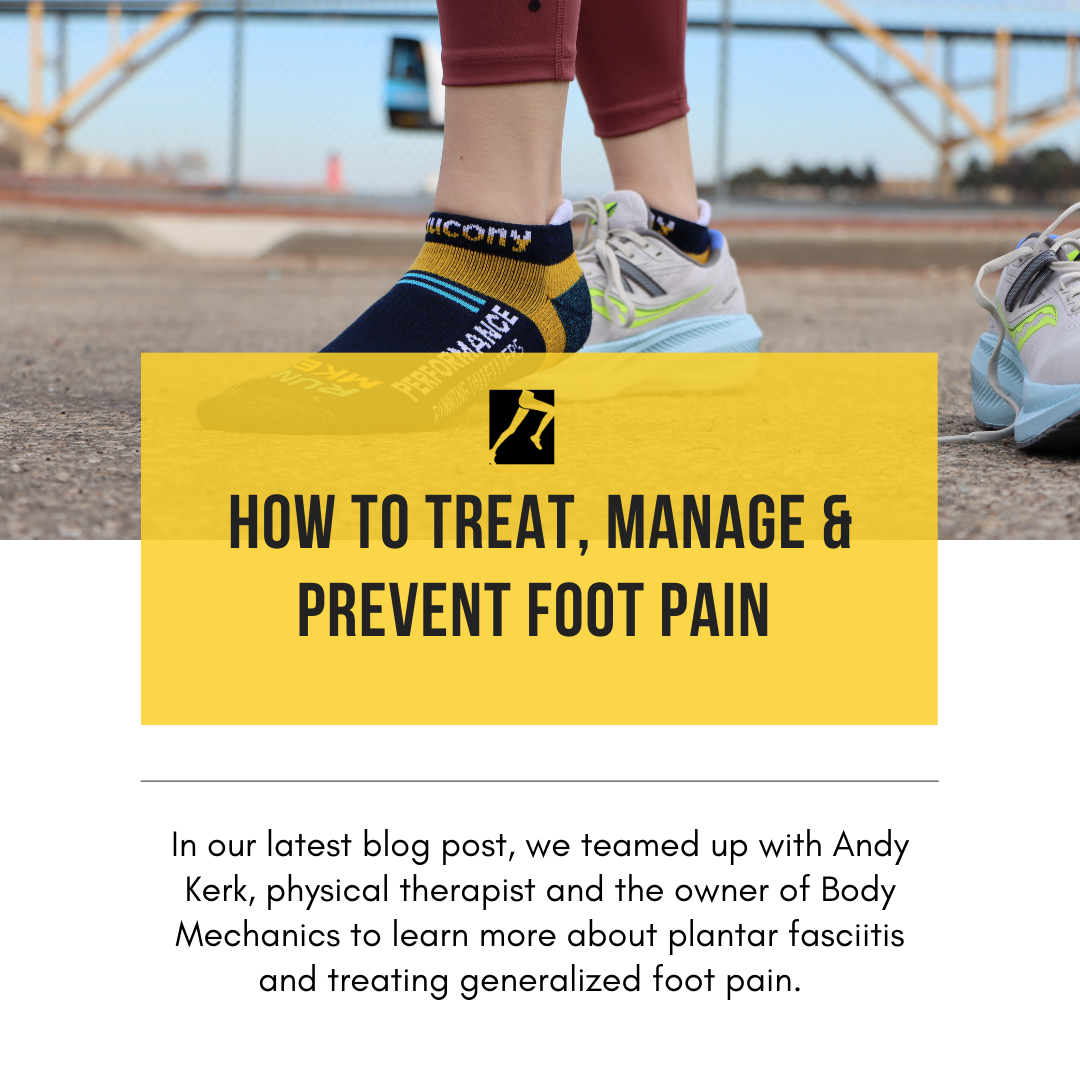Best Winter Running Shoes
Feeling confident, even in the most unforeseen weather conditions play a big factor in whether or not you decide to head out for a run. The last thing you want to encounter during your winter strides are soggy socks, frozen feet or even worse a nasty slip on ice that bruises your bum and your ego. Thankfully, shoes have a variety of what we think are pretty cool features that not only keep you on two feet while running, but also improve your performance.
Keep the Water Out as you Put the Miles in!
In today's shoe market you'll see names thrown around such as GORTEX (waterproof), RUNSHIELD (water resistant) and DWR (water repellent). These protective coatings, usually applied to the upper and mesh portions of shoes, will keep you dry, toes toasty and can keep your shoes looking their best. You will notice with the extra layer of coating, there's a slight loss in breathability. However, through innovative engineering, running shoes have been able to maintain a good level of comfort, including how warm your feet will get and how well they wick moisture away (socks help the most). If you're planning to run in snow, slush, rain and mud - consider a running shoe with a protective coating.
Ice, Ice, Baby...
Depending on the severity of the road, trail and sidewalk conditions, at times it is truly best to hop on a treadmill or head to an indoor track. We get it though, nothing quite compares to fresh outdoor air, high fives from other fellow runners and the sound of the pavement under your feet. For the brave, you'll want to look for shoes that offer outsole lugs made either specifically for trail running or for running on ice. Typically these will be slightly larger, more pronounced and offer stiffer materials to help you dig into the ground. Most trail shoes act as a great winter running shoe and even with their protective shells of durability and traction, brands have continued to prioritize cushioning, breathability and weight - meaning you won't have to trade in traction for feeling like you have bricks tied to your feet.

Started from the bottom now we're...runnin'
When slogging through whatever weathered terrain Mother Nature has blessed us with, your best chance at a successful run all starts with the bottom, of your shoes, A.K.A the outsoles. If you are cringing at the thought of buying yet another pair of shoes or are simply not a fan of trail shoes, there are a few "hack"s you can consider!
For the DIY crowd- Create your own lugs with screws!
Yes, you are reading that correctly. If you have a pair of beloved running shoes that might only have enough miles left in them to get you through the winter season, screw it and try this! Head to the hardware store (or your junk drawer) and pick up #10 x 3/8-inch hex-head screws. Then, drill the screws into the thickest parts of the soles. Try six on the forefoot and four on the heel. Boom! You now have winter-ish shoes. This works even better on a pair that have a protective coating on the uppers, that way you are dry and upright through every mile. Just make sure to not drill through the bottom of the sole and we wouldn't recommend this on a pair of shoes with a carbon or nylon plate (unless you have enough foam between the plates and sole).

When you are determined to run on packed snow and ice, consider this nifty supplement for your running shoes!
Yaktrax Run ice traction cleats feature 3mm carbide steel spikes for reliable toe-off, and 1.4 mm steel coils for flexible landing on the heel. Surprisingly when worn on the proper conditions such as packed snow or ski slope like conditions, it's surprising on how natural they will feel while running. This is another options for those who are not wanting to invest in a second (or third) pair of running shoes only for winter running. Make sure you get the correct size, otherwise it will feel clunky under your feet. Or, if you want to use for walking around, consider sizing up to pair with your favorite pair of Uggs or winter boots.
Don't trip unless it's down memory lane
Who had a parent that made them stuff plastic bags into your boots or shoes to prevent your socks from getting wet? **raises hand**. Not sure what was worse, walking around with mismatching grocery store bags hanging out of your boots while strolling down the school hallway or the fact that this method was horribly ineffective, only to leave your socks wet and your attitude soggy. We're not saying it's the worst idea. If you're in a pinch and want to give it a go, we are not stopping you. However, thankfully shoe brands have since created a few work arounds to the old plastic bag trick. Many of our shoes are compatible with gaiters, a strapless and breathable barrier you can attach to certain shoes. This is an option for those who are determined to keep the snow and debris out and your ankles cozy. Even better there are styles that offer a pre-built in additional gaiter at the collar that keeps extra debris and water from getting into your shoes.

And remember, you're just as much of a runner if you prefer to log your miles indoors!
While switching up the terrain you run on is important for your overall running health and helps in injury prevention, there is no such thing as being a "real runner" vs not. Miles logged indoors vs outdoor are still miles logged and you should be proud of every step you take. After all, all you really need to start running is a little will power and a great pair of running shoes.
We'll catch you on the next run!





Comments
abdul manan —
amazing
abdul manan —
thanku for sharing